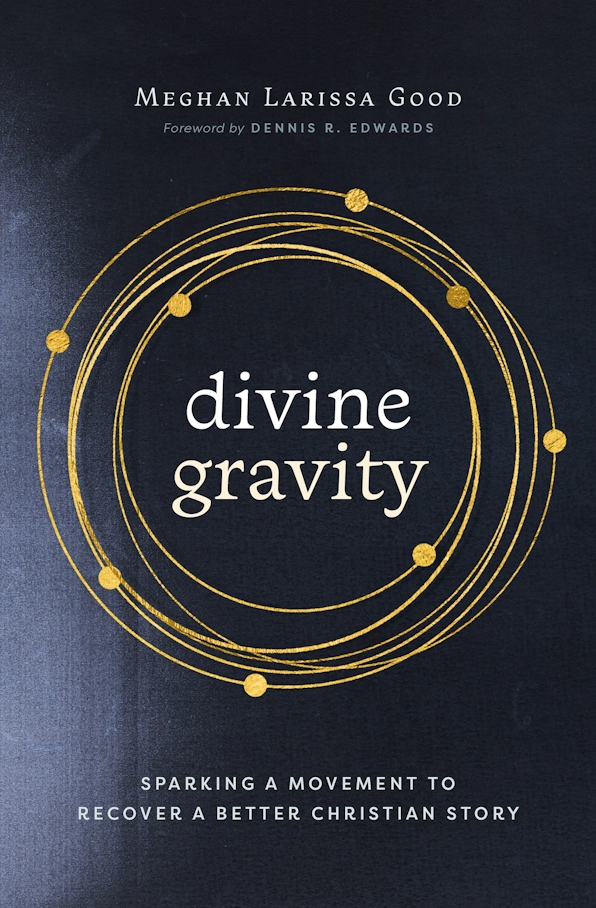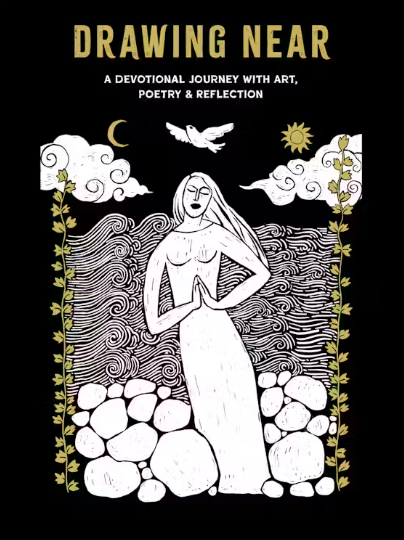by Michelle Curtis
Lately in Mosaic Conference circles, people have been talking a lot about becoming a “centered set” community. It’s an exciting idea, but one I struggle to picture clearly. What would living as a centered-set church look like in practice? We say Jesus is our center, but how much do we agree on what we mean by that?
Dr. Meghan Larissa Good’s Divine Gravity: Sparking a Movement to Recover a Better Christian Story fleshes out this center. Through eight “rediscoveries,” Good articulates the Jesus-centered story found in Scripture, offering both critique and hope for the church.
The first resonates deeply with us Anabaptists: God looks like Jesus and Jesus is the key to understanding the Bible. The second rediscovery examines what we mean by “Jesus saves”; salvation includes God setting everything right “on earth as it is in heaven.” The third is simple: “Jesus is Lord” and he leads us in a whole new way of living. With each concept, Good beautifully describes ways the church has gone wrong and calls us back to the center in Jesus.
The fourth rediscovery made my heart soar and ache in the same breath. Good’s sketch of “a better Christian story” and her vision for how the church might embody it connects to my own deep yearnings for the church. She writes, “God is throwing down the gauntlet with the unseen rulers and powers, saying, ‘You big posers think you’re so clever in the ways you divide. Well, get a load of my church: they belong to every culture, nation, personality, and philosophy; they don’t have a blessed thing in common. But look at how I can make enemies into siblings.’” (114)
This is the church I long for, and in many ways, I’ve experienced this vision in Mosaic Conference. I’ve experienced it at our women’s gatherings, where three languages swirl together and sisters in Christ pray for one another whether or not we understand each other’s languages or theology. I feel it during Mosaic Assembly worship, where it feels like a Revelation vision—“every tribe, tongue, and nation”—is coming to life. I love Mosaic Conference and what the Spirit is doing among us.
And yet, my heart also breaks as a half-dozen congregations have left Mosaic over the last few years, including the one I grew up in. Mosaic’s leadership is recommending discontinuing membership in Mennonite Church USA, the denomination that educated me as a pastor (at the Anabaptist Mennonite Biblical Seminary), and I don’t know how to make sense of this possible separation. And still somehow it seems that God’s Spirit is doing something new and beautiful in Mosaic Conference, even as we fallible humans keep stumbling.
Rediscovery five reminds us that we are ambassadors of God’s reconciliation, sent into the world with a mission. Rediscovery six centers the work of the Holy Spirit in that mission (often overlooked in some Mennonite circles). Good’s personal stories in this chapter are especially powerful. Rediscovery seven overturns the myth of redemptive violence, reminding us that evil is overcome by the power of sacrificial love. The cross was the shape of God’s power and calls us to reject violence and power-over too.
Good’s final rediscovery is, “the unity of the church is secured by the center it orbits” (209). This one leaves me praying that God will do what only God can do for the big, messy, beautiful global church.
Each chapter closes with discussion questions, making Divine Gravity ideal for small groups. One question lingers with me and may be valuable for all of us: “Do you think you can be in close relationship with someone who is wrong about something important without being complicit in their wrongs? Explain your answer in light of Jesus” (221).
I’m delighted that Meghan Larissa Good will be our speaker at Mosaic Fall Delegate Assembly on Oct. 31 (for the Formation equipping session) and Nov. 1 (during worship). Her book puts flesh on this idea of “centered set church” and what it might look like in practice. If you’re curious about that, Divine Gravity is a must-read—or a must-listen (Good narrates the audiobook herself, and I can confirm she makes a good companion for driving or doing the dishes).
The first 50 participants at the Friday Night Equipping Event on Oct. 31 to stop by the table will receive a complementary copy of Divine Gravity: Sparking a Movement to Recover a Better Christian Story.

Michelle Curtis
Michelle Christian Curtis is co-pastor of Ambler (PA) Mennonite Church with her husband, Jacob.
Mosaic values two-way communication and encourages our constituents to respond with feedback, questions, or encouragement. To share your thoughts or send a message to the author(s), contact us at communication@mosaicmennonites.org.



